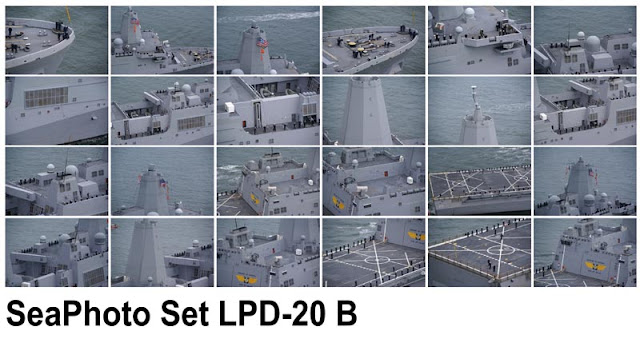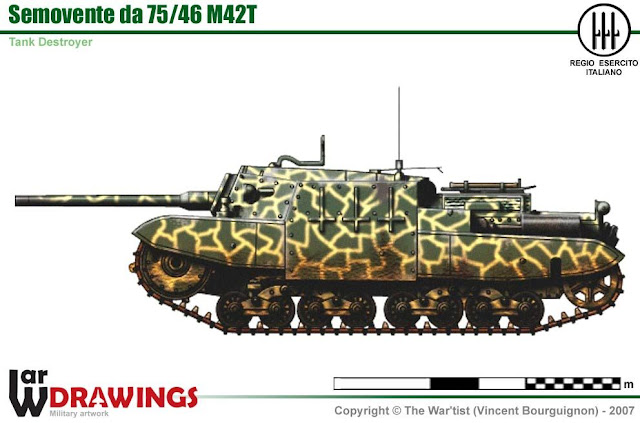La classe di San Antonio è una classe di unità anfibie, chiamata anche “LPD", utilizzata dalla Marina degli Stati Uniti. Queste navi da guerra sostituiscono le unità LPD classe Austin (comprese le sottoclassi Cleveland e Trenton), nonché le navi anfibie classe Newport e le anfibie classe Charleston che sono già state ritirate dal servizio operativo.
Panoramica della classe:
- Cantieri costruttori: Huntington Ingalls Industries (precedentemente Northrop Grumman Ship Systems);
- Operatore: Marina degli Stati Uniti;
- Costo: $ 1,605 miliardi (ave. Per classe, FY2012) - $ 2,021 miliardi (ultima nave, FY2012);
- In costruzione: dal 2000 ad oggi;
- In allestimento: dal 2006 ad oggi;
- Unità previste: 26 (13 Batch I e 13 Batch II);
- Costruite: 2
- Completate: 11
- In attività operativa: 11.
Caratteristiche generali:
- Genere: LPD
- Dislocamento: 25.300 t (pieno carico)
- Lunghezza: 684 piedi (208 m)
- Larghezza: 105 piedi (32 m)
- Pescaggio: 7,0 m (23 piedi), a pieno carico
- Propulsione: Quattro motori dieselColt-Pielstick marini sequenzialmente turbocompressi, Alberi elica: due alberi, 41.600 shp;
- Velocità: Oltre 22 nodi (25 mph; 41 km / h).
Imbarcazioni da sbarco trasportate:
- Due LCAC(cuscino d'aria); o
- 1 × LCU(convenzionale)
- 14 × Veicoli d'assalto anfibi
Personale imbarcato:
- Equipaggio: 28 ufficiali e 333 marinai arruolati
- Forza di sbarco: 66 ufficiali e 633 truppe arruolate
- Sensori e sistemi di elaborazione dati: AN / SPS-48 G, AN / SPQ-9 B
- Guerra elettronica: AN / SLQ-32
Armamento:
- 2 cannoni Bushmaster II da 30 mm
- due lanciatori missilistici Rolling Airframe
- due VLS a otto celle Mk 41 per ESSM quad- pack (non montato)
- Diverse torrette gemelle M2 Browning per mitragliatrici.
Aeromobili trasportati:
- Quattro convertiplani Bell-Boeing Osprey MV-22 contemporaneamente sul ponte di volo ed uno nell’hangar.
Furono proposte dodici navi della classe di San Antonio, ma solo undici furono finanziate. Il loro prezzo target iniziale era di $ 890 milioni cadauna; il loro costo medio è lievitato a $ 1,6 miliardi. L'autorizzazione alla difesa per l'anno fiscale 2015 comprendeva un finanziamento parziale per una dodicesima unità classe San Antonio. A partire da gennaio 2018 undici navi da guerra di questa classe sono in servizio con la US Navy con altre due navi in costruzione o autorizzate.
DESIGN
La classe di San Antonio è stata progettata per fornire alla US NAVY ed al Corpo dei Marines degli Stati Uniti piattaforme moderne munite di bacino allegabile e collegate in rete, costruite per funzionare con piattaforme aeromobili del 21° secolo, come l' MV-22 Osprey, o l'Expeditionary Fighting Vehicle(poi cancellato), mezzi da sbarco LCAC e mezzi anfibi "Bae Systems-Iveco SUPER AV", tramite i quali i marines verranno trasportati a terra in sicurezza.
BAe Systems-Iveco "SUPER AV"
La nave è più grande di oltre il 45 percento rispetto alla vecchia classe Austin, con oltre 25.000 tonnellate a pieno carico. Trasporta meno truppe, ma ha il doppio dello spazio per veicoli, mezzi da sbarco e aeromobili.
Il progetto ha abbracciato una filosofia "Design for Ownership"; un approccio ingegneristico concorrente che inserisce input di operatore, manutentore e formatore nel processo di sviluppo del progetto. L'obiettivo era garantire che le realtà operative fossero prese in considerazione durante la progettazione, l'integrazione, la costruzione, i test e il supporto del ciclo di vita delle nuove navi e dei loro sistemi. Questo processo aveva lo scopo di migliorare la prontezza al combattimento, migliorare la qualità della vita e ridurre i costi totali di proprietà ed ha comportato numerosi cambiamenti durante il progetto.
La classe di San Antonio ha importanti caratteristiche di sopravvivenza e tecnologia informatica. Oltre alla protezione da parte dei missili anti-missile RAM dalle minacce aeree, la classe è stata progettata per ridurre al minimo la firma del radar. Le tecniche che riducono la sezione del radar (RCS) rendono le navi più difficili da localizzare e colpire. Le caratteristiche di sopravvivenza migliorate includono una migliore resistenza ad una esplosione nucleare, protezione dalla frammentazione ed una struttura temprata dagli urti. La rete in fibra ottica (SWAN) a bordo delle navi collega i sistemi integrati a bordo. La rete consentirà la configurazione "plug-in e lotta", aggiornando e sostituendo l'hardware più facilmente quando saranno disponibili nuove tecnologie. Inoltre, la classe ha ampi sistemi di comunicazione, comando, controllo e intelligence per supportare le missioni di guerra di spedizione attuali e previste del 21° secolo.
La classe SAN ANTONIO è dotata dI sistema integrato di autodifesa della nave (SSDS) che fonde i segnali radar e di altri sensori e controlla i sistemi di armi per una capacità di reazione rapida automatizzata contro le minacce aeree.
L'albero del sistema Advanced Mast / Sensors Mast (AEM / S), una struttura ottagonale alta 93 piedi con un diametro di 35 piedi, è costruito con un materiale composito selettivo in frequenza multistrato. È progettato per consentire l’emissione delle frequenze dei sensori della nave con una perdita molto bassa, riflettendo le frequenze dei sensori nemici. La forma ottagonale affusolata di AEM / S è progettata per ridurre la sezione trasversale radar e racchiudere le antenne: fornisce prestazioni migliorate e riduce notevolmente i costi di manutenzione delle antenne.
La classe di San Antonio incorpora anche i più recenti standard di qualità di vita a bordo per i marinai imbarcati, tra cui posti barca, un centro servizi navali, un centro risorse per l'apprendimento e un centro fitness. Le strutture mediche comprendono due sale operatorie da 124 posti letto. Inoltre, sono le prime navi USN progettate per ospitare marinai e marines di entrambi i sessi come parte dell'equipaggio e truppe anfibie.
A metà del 2016, l’Us Navy e il Corpo dei Marines hanno studiato la possibilità di installazione di un sistema di lancio verticale (VLS) nelle navi di classe San Antonio in modo da poter schierare missili offensivi più prestanti Il concetto originale della nave includeva due Mk 41 VLS con 8 celle a prua, con la possibilità di imbarcare anche missili da crociera Tomahawk per supportare i marines a terra con poche modifiche al sistema di combattimento.
STORIA
A seguito dei numerosi problemi e incidenti riscontrati dall'USS San Antonio, il direttore del Dipartimento della Difesa statunitense, Test operativo e valutazione (DOT & E), ha dichiarato nel 2010 che le navi sono "in grado di operare" in un ambiente benigno", ma non efficaci, ma non idonee a sopravvivere in una situazione di combattimento". Il DOT & E ha scoperto nel 2011 che la prima nave della classe, la USS San Antonio, aveva diverse carenze che la rendevano "inefficace dal punto di vista operativo, non adatta o sopravvivibile in un ambiente ostile".
Nell'aprile 2015, l’US Navy ha proposto di aggiungere una dodicesima nave alla classe, che sarà costruita nei cantieri Ingalls in cambio di un cacciatorpediniere che verrà impostato in seguito. Il 4 dicembre 2015 è stata ordinata la dodicesima nave.
DERIVATI
Il senatore americano Kay Hagan ha chiesto se la linea di costruzione LPD-17 debba essere estesa a una dodicesima nave come ponte per la costruzione della LX (R)- precedentemente LSD (X) - sullo stesso scafo, ma l'USN ha indicato che i requisiti dell'LX (R) non sono ancora stati ultimati e che lo scafo della LPD-17 potrebbe essere troppo grande per una tale missione. Tuttavia, il comandante James F. Amos aveva anche appoggiato l'abbandono dell'LSD a favore della produzione di LPD. Nell'ottobre 2014, il segretario della Marina Ray Mabus firmò un appunto interno in cui raccomandava che la nave da guerra LX (R) fosse basata sul progetto della classe esistente San Antonio. Il design della LPD-17 è stato selezionato su una variante straniera e un design completamente nuovo per soddisfare i parametri di capacità e costo richiesti. La selezione ufficiale di basare la LX (R) sul design LPD-17 deve ancora venire con l'approvazione Milestone A. Il National Defense Authorization Act per l'anno fiscale 2015 includeva un finanziamento parziale per una dodicesima nave classe San Antonio (LPD-28). All'inizio del 2014, Huntington Ingalls Industries (HII) ha mostrato la sua versione Flight IIA dello scafo LPD-17 per la nave anfibia LX (R) della Marina. Il design è stato ulteriormente modificato rimuovendo alcune delle funzionalità di fascia alta per creare un "camion anfibio" in sostituzione delle unità anfibie Whidbey Island e Harpers Ferry.
La serie Flight IIA ha migliorato le funzioni di comando e controllo (C2) delle LSD, con metà degli spazi medici dell'LDP-17 e un hangar più piccolo per stivare due MV-22, nessun albero composito, due motori diesel di propulsione principale non specificati (MPDE), due posti per LCAC o una LCU, una capacità di truppa ridotta (500) e un equipaggio di circa 400 marinai. Nel gennaio 2015 la Marina e il Corpo dei Marines hanno deciso di utilizzare lo scafo LPD-17 modificato per il programma LX (R).
Il capo delle operazioni navali Greenert prese in considerazione l'utilizzo di parte dello spazio extra della classe di San Antonio per montare l'equipaggiamento modulare nello stesso modo delle navi da combattimento costiere. Nell'ambito della loro offerta di offrire LPD-17 "Flight II" per il contratto di sostituzione della nave di sbarco, il cantiere HII ha suggerito di attrezzare le navi per trasportare il sistema di difesa missilistica balistica Aegis. Sebbene non vi sia alcun requisito formale per la variante BMD, HII riporta uno studio non ufficiale della Marina degli Stati Uniti, in modo tale che sarà modellato in scenari di wargame nel 2016 e 2017. La nuova serie potrebbe ospitare fino a 288 lanciatori Mk41 VLS e un radar con una sensibilità 1000 volte maggiore del radar SPY-1D dei cacciatorpediniere classe A.Burke.
ENGLISH
The San Antonio class is a class of amphibious transport docks, also called a "landing platform, dock" (LPD), used by the United States Navy. These warships replace the Austin-class LPDs (including Cleveland and Trenton sub-classes), as well as the Newport-class tank landing ships, and the Charleston-class amphibious cargo ships that have already been retired.
Twelve ships of the San Antonio class were proposed, but only eleven were funded. Their original target price was $890 million; as built, their average cost is $1.6 billion. Defense Authorization for Fiscal Year 2015 included partial funding for a twelfth San Antonio-class ship. As of January 2018 eleven warships of this class are in service with the U.S. Navy with an additional two ships under construction or authorized.
Design
The San Antonio class was designed to provide the Navy and U.S. Marine Corps with modern, sea-based platforms that are networked, survivable, and built to operate with 21st century transformational platforms, such as the MV-22 Osprey, the (since canceled) Expeditionary Fighting Vehicle (EFV), air-cushioned landing craft (LCACs), and future means by which marines are delivered ashore. The ship is more than 45 percent larger than the Austin class, displacing more than 25,000 tons at full load. It carries fewer troops, but has twice as much space for vehicles, landing craft, and aircraft.
The project embraced a "Design for Ownership" philosophy; a concurrent engineering approach that injects operator, maintainer, and trainer input into the design development process. The goal was to ensure that operational realities are considered throughout the total ship design, integration, construction, test and life cycle support of the new ships and their systems. This process was intended to improve combat readiness, enhance quality of life, and reduce Total Ownership Costs, and resulted in numerous changes during the project.
The San Antonio class has significant survivability features and computer technology. In addition to Rolling Airframe Missile (RAM) protection from air threats, the class was designed to minimize radar signature. Techniques that reduce radar cross-section (RCS) make the ships more difficult to locate and target. Enhanced survivability features include improved nuclear blast and fragmentation protection and a shock-hardened structure. The fiber-optic shipboard-wide area network (SWAN) connects onboard-integrated systems. The network will allow "plug in and fight" configuration, updating and replacing hardware more easily when newer technology becomes available. Moreover, the class has extensive communications, command, control, and intelligence systems to support current and projected expeditionary warfare missions of the 21st century.
The class is fitted with the integrated Ship Self-Defense System (SSDS). The system fuses the radars and other sensors and controls the weapons systems for an automated fast reaction capability against air threats.
The Advanced Enclosed Mast/Sensors (AEM/S) System mast, a 93-foot-high octagonal structure 35 feet in diameter, is constructed of a multi-layer frequency-selective composite material. It is designed to permit the ship's own sensor frequencies with very low loss while reflecting other frequencies. The tapered octagonal shape of the AEM/S is designed to reduce the radar cross section, and enclosing the antennas provides improved performance and greatly reduces maintenance costs.
The San Antonio-class also incorporates the latest quality of life standards for the embarked Marines and sailors, including sit-up berths, a ship services mall, a learning resource center, and a fitness center. Medical facilities include two operating rooms and 124 beds. Additionally, they are the first USN ships designed to accommodate sailors and Marines of both sexes as part of the crew and embarked troops.
By mid-2016, the Navy and Marine Corps were studying installing a vertical launch system (VLS) into San Antonio-class ships so they could field larger offensive missiles. The original ship concept included two 8-cell Mk 41 VLS in the bow, which is being reexamined to add Tomahawk cruise missiles to support Marines ashore with little modification to the combat system.
History
Following the extended problems and incidents experienced by USS San Antonio, the U.S. Department of Defense's Director, Operational Test and Evaluation (DOT&E), stated in 2010 that the ships are "capable of operating 'in a benign environment', but not effective, suitable and not survivable in a combat situation". The DOT&E found in 2011 that the first ship of the class, USS San Antonio, had several deficiencies which rendered it "not operationally effective, suitable, or survivable in a hostile environment". In April 2015, the USN proposed adding a 12th ship to the class, which will be built at Ingalls in exchange for a destroyer to be named later. On 4 December 2015, the 12th ship was ordered.
Derivatives
U.S. senator Kay Hagan has asked if the LPD-17 construction line should be extended to a 12th ship as a bridge to building the LX(R) (formerly LSD(X)) on the same hull, but the USN has indicated that the requirements of the LX(R) have not yet been settled and that the LPD-17 hull might be too large for such a mission. However, Commandant James F. Amos had also endorsed dropping LSD in favor of continued LPD production. In October 2014, Secretary of the Navy Ray Mabus signed an internal memo recommending that the LX(R) warship be based on the existing San Antonio-class design. The LPD-17 design was selected over a foreign variant and an entirely new design to meet required capability, capacity, and cost parameters. Official selection of basing the LX(R) off the LPD-17 design still has to come with Milestone A approval. The National Defense Authorization Act for Fiscal Year 2015 included partial funding for a twelfth San Antonio-class ship (LPD-28). In early 2014, Huntington Ingalls Industries (HII) displayed its Flight IIA version of the LPD-17 hull for the Navy's LX(R) amphibious ship. The design is further modified by removing some of the higher-end capabilities of the San Antonio class to create an "amphibious truck" to replace the Whidbey Island and Harpers Ferry landing ship docks. The Flight IIA has improved command and control (C2) features over the LSDs, half the medical spaces of the LDP-17 and a smaller hangar for stowing two MV-22s, no composite masts, two unspecified main propulsion diesel engines (MPDE), two spots for LCACs or one LCU, a reduced troop capacity (500) and a crew of about 400 sailors. In January 2015, the Navy and Marine Corps decided to go with the modified LPD-17 hull for the LX(R) program.
Chief of Naval Operations Greenert considered using some of the extra space in the San Antonio class to mount modular equipment in the same fashion as the littoral combat ships. As part of their bid to offer "Flight II" LPD-17s for the dock landing ship replacement contract, HII has suggested fitting out the ships to carry the Aegis Ballistic Missile Defense System. Although there is no formal requirement for the BMD variant, HII report unofficial support for it within the U.S. Navy, such that it will be modeled in wargame scenarios in 2016 and 2017. It could accommodate up to 288 Mk41 VLS missile tubes and a radar with 1000 times the sensitivity of the SPY-1D radar of the Burke destroyers.
Flight II - On 2 August 2018, the U.S. Navy and Huntington Ingalls signed a contract for long lead items for LPD-30, the first of the 13-ship more affordable Flight II class. The contract was for US$165.5M. The cost goal is for US$1.64B for the first ship, and $1.4B for subsequent ships. LPD-30 will be fitted with a Raytheon Enterprise Air Surveillance Radar, an upgrade over the AN/SPS-48 currently in LPD-17s. Huntington Ingalls will build the new flight exclusively. On 26 March 2019, Huntington Ingalls announced the award of a US$1.47 billion, fixed-price incentive contract for LPD 30 (the 14th ship, and first of Flight II). On 10 October 2019, name of the ship was announced as USS Harrisburg for Harrisburg, Pennsylvania, the state's capital.
(Web, Google, Wikipedia, You Tube)




























































































